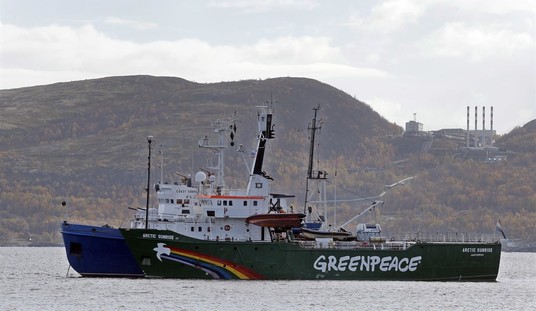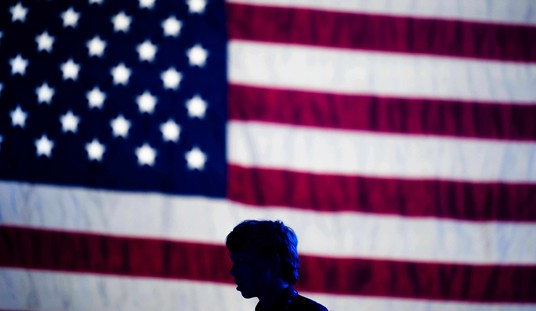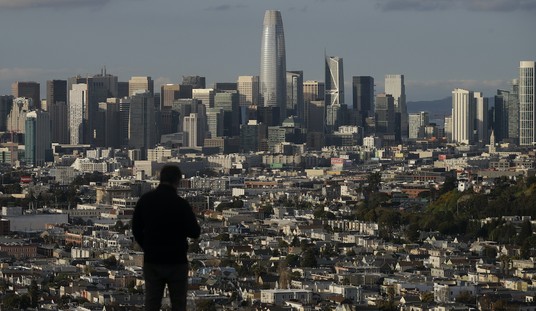The Secretary of Defense was on Face the Nation this morning and you can tell that it was probably something of a slow news day by the fact that he generated headlines by saying that a war would North Korea would be “catastrophic.” All things considered, that probably should have been about as surprising of a revelation as the discovery that dogs like to steal hamburgers. But given some of President Trump’s comments about our patience wearing thin with Kim Jong-un’s nuclear program and missile tests, it probably seemed like a chance for the press to portray this as some sort of internal discord in the White House. (The Hill)
Defense Secretary James Mattis warned on Sunday that a war with North Korea would be “catastrophic,” and would place United States allies in the region at extreme risk.
“The North Korean regime has hundreds of artillery cannons and rocket launchers within range of one of the most densely populated cities on earth, which is the capital of South Korea,” Mattis said on CBS’s “Face the Nation.”
“This regime is a threat to the region, to Japan, to South Korea. And in the event of war, they would bring danger to China and to Russia as well,” he added. “But the bottom line is it would be a catastrophic war if this turns into a combat if we’re not able to resolve this situation through diplomatic means.”
Obviously diplomacy is preferable to war under any normal circumstances, but the General would likely also agree that the situation with North Korea and their diminutive, psychotic dictator has been anything but normal for a long time. That makes it worth asking the questions of precisely how much longer the world tolerates what Kim is doing and if there are any circumstances where a preemptive strike might be preferable even knowing how catastrophic the fallout (hopefully figurative fallout as opposed to nuclear) would be.
As to the first question, I’m not here to tell you where your own answer should lie, but you might want to consider some of the most likely scenarios. Despite warnings from everyone on the planet, nothing slows Kim down in his testing, or so it seems. Thus far all the missiles have fallen into the sea at varying distances from his coast. How long do we ignore not only the nuclear tests, but the missile experiments? Do we wait until he launches one with the demonstrated capability to reach Los Angeles? And then what? If he hasn’t actually hit a target anywhere, would you attack first? What if he strikes a US warship or those of one of our allies? In short, do we have to wait until he launches an attack against South Korea or us before striking with no other options on the table?
And assuming that worse comes to worst (no matter how it happens) what does that war look like? There have been plenty of warriors and military analysts pondering that question more and more lately. You can read one long but very well thought out example at Newsweek from earlier this month. In short, anything that involves a nuclear exchange is going to be disastrous (or catastrophic if you prefer the SecDef terminology) but even if it’s a completely conventional war it’s not much better.
Should the day come when President Trump believes he needs to order a pre-emptive strike against targets in North Korea to eliminate a direct threat, the U.S will not be able to take out all of the North Korean artillery front loaded near the border. “Not,” says former National Security Council staffer Victor Cha, “without using tactical nuclear weapons,” which is not something the U.S. would consider, given that Seoul is right down the road. A U.S. strike, simply put, could well trigger the second Korean War.
What would another armed conflict on the peninsula look like? During the Korean War, which lasted from 1950 to 1953, some 2.7 million Koreans died, along with 33,000 Americans and 800,000 Chinese. In any pre-emption scenario now, the U.S. would try keep the strike limited to the task at hand; at the same time Washington would signal in any way it could—probably via the North’s ally in Beijing–that it did not seek a wider war.
All of the scenarios are bad. Even if we strike first there’s not a 100% certainty that we could prevent a nuclear strike from North Korea. But even if we don’t, Kim could take out large sections of Seoul using thousands of conventional artillery batteries staged along the DMZ with shells which can reach the capital in 45 seconds. He also reportedly has a fleet of chemically armed Scud missiles which could rain down on every airport, train station and port, freezing the population in place. Our ability to completely “shock and awe” North Korea to the point where they couldn’t hurt anyone would almost certainly require nukes, which means we’d irradiate our own troops and allies. (Our forces are right across the DMZ and Seoul is only 40 miles from there.)
The one strategy under discussion which might be slightly better is the decapitation plan… a first strike which takes out Kim and his senior people. Perhaps the rest of the military would be loathe to take too much action without the boss in charge. But, yet again, how sure are we that we’d take out the entire senior command before they knew they were in a fight?
These are unpleasant topics to think about but we’re going to need to be prepared. Does Trump have a plan? How about our allies? And how much of the nation would back the President if we did strike first? I don’t see a good outcome here either way, but the day is probably coming when something is going to happen one way or the other.









Join the conversation as a VIP Member